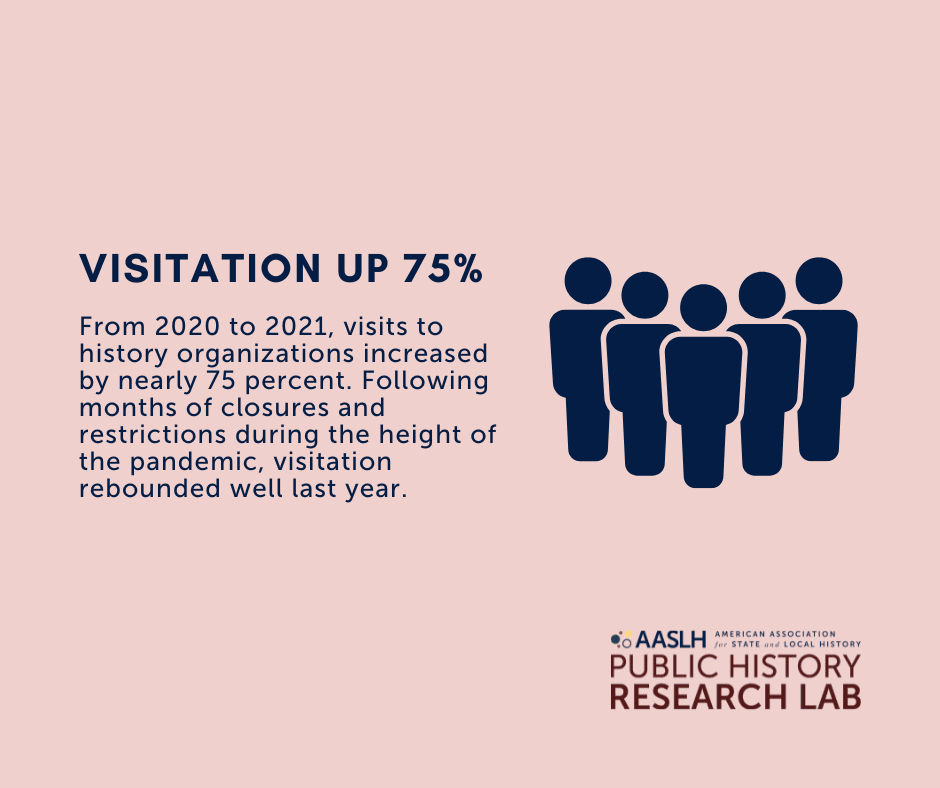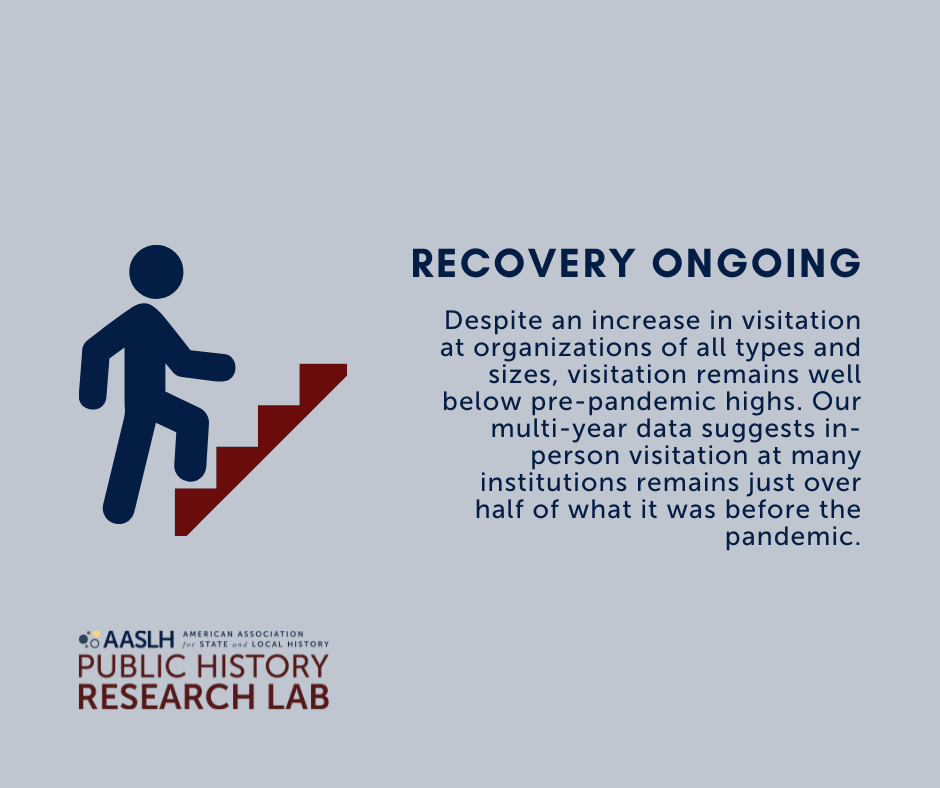
By John Garrison Marks, Director, Public History Research Lab
This week, the American Association for State and Local History Public History Research Lab is excited to publish our fourth annual National Visitation Report. This annual assessment of in-person visitation trends at history organizations provides a snapshot look at one of the major ways people engage with our institutions. By tracking year-to-year change in attendance we can determine if it’s going up or down and—crucially—how it differs based on an institution’s size, location, or type.
Although we began this research in 2018 in response to persistent questions from institutional leaders and interested observers, the National Visitation Report took on a new urgency over the past two years. Because of the baseline we had established in the years prior, we were able to appropriately assess the seismic changes of in-person engagement wrought by the pandemic. For 2020, we found that in-person visitation declined nearly 70 percent at history organizations of all types, all sizes, all across the country.
In this year’s report—measuring visitation changes from the nadir of the pandemic in 2020 to the early recovery in 2021—we found an uneven recovery of in-person activity. Overall, visits to history organizations increased about 75 percent in 2021 compared to 2020. While that growth is a necessary step forward, it also points to the long road ahead to anything like a full recovery for the public history and museum sector. Most institutions only welcomed about half as many visitors last year as they did prior to the pandemic, even with substantial growth.

Yet, as is nearly always the case in measuring visitation, top-line numbers don’t tell the full story. Assessing visitation by institutional budget size paints a different picture. The nation’s largest institutions—those with annual budgets larger than $10 million, which AASLH estimates to be less than 1 percent of history organizations nationwide—saw visitation at about 90 percent of their pre-pandemic levels in 2021. Smaller organizations, particularly those institutions with annual budgets of less than $250,000, experienced much slower visitation growth last year. Institutions with budgets under $50,000 per year, for example, saw their visitation grow just 48 percent last year, the smallest increase of any budget category.
While visitation may not be the best way of measuring the reach and impact of our institutions, it is one of the few metrics tracked across the entire field—among small, all-volunteer historical societies and big, internationally-renowned museums alike. This year’s report reveals that while organizations’ recoveries may be moving in the right direction, there’s still a long way to go. We hope research and insights like the National Visitation Report can support advocacy, planning, and other activities in the coming years.
To view our infographic summary, download the full report, and learn more about the National Visitation Report, visit aaslh.org/research.



